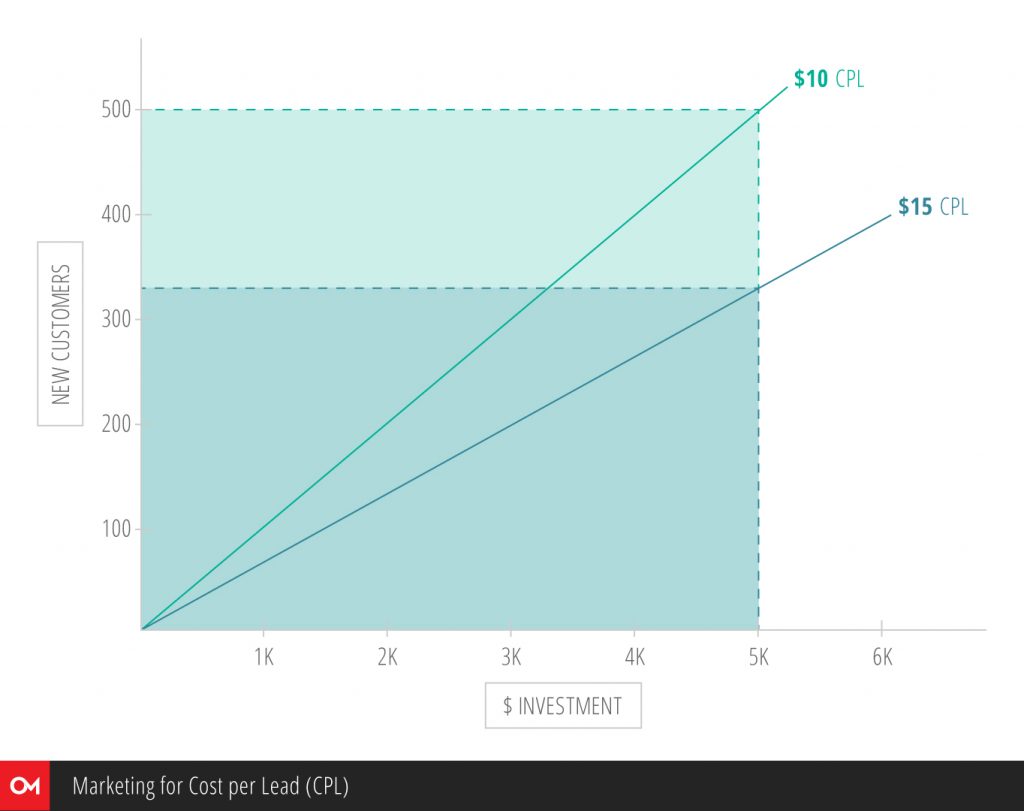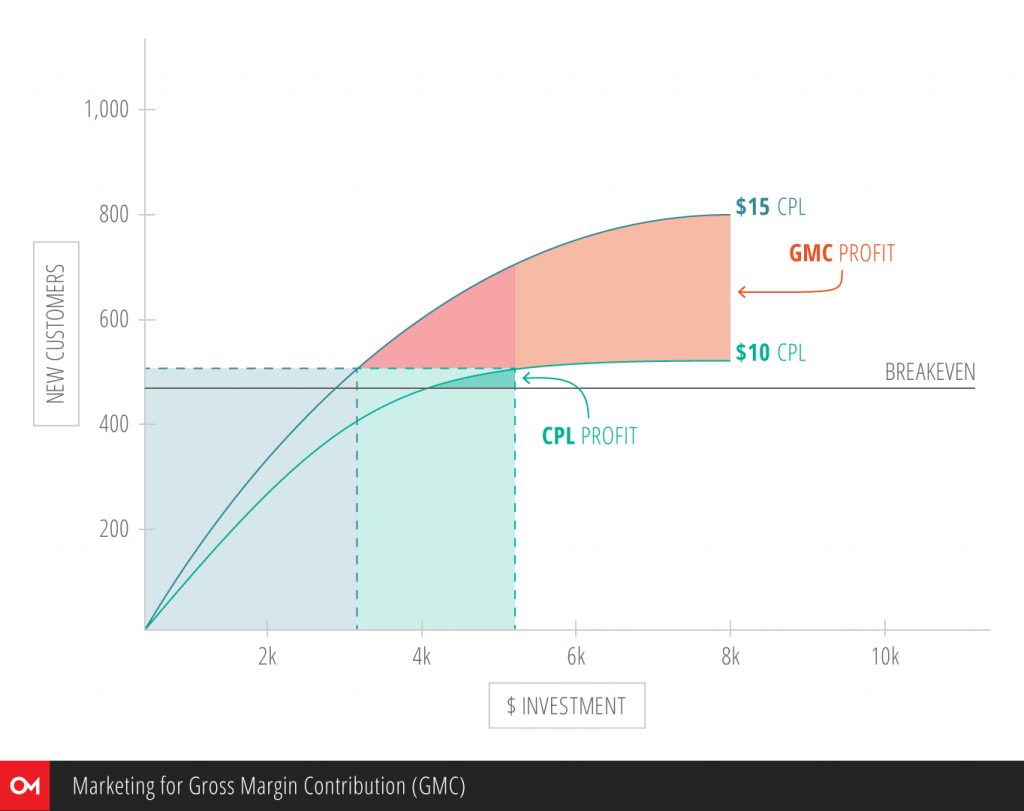The Bottom Line: Examining Cost Per Lead vs. Gross Margin Contribution

Is cost per lead the right marketing strategy for you or would a gross margin contribution strategy contribute more to your bottom line? While working with numerous companies we continually see most small-to-medium-sized businesses concerned about maximizing their cost per lead. Yet some concentrate more on maximizing the Gross Margin Contribution dollars they get from additional new customers.
So what are the benefits of the two strategies and which one might be the best for your company? Let’s explain the differences and let you decide which is best for your business.
Marketing for Cost per Lead (CPL)
What is it and why do most companies focus on it? Cost per Lead (CPL) simply means maximizing the number of leads you get for the least amount of money possible, thereby maximizing your return on investment (ROI). If you are willing to invest $5,000 per month, you want the most leads possible that you can convert into paying customers that make you money. If your average ticket is $100 and your gross margin is 50%, then you have $50 dollars to cover overhead, make a profit, and invest in your marketing to bring in leads. If you can decrease your CPL by $5 then you can stretch your marketing investment to gain more customers and therefore contribute more to profit. That makes a lot of sense. I chose these numbers so that math and outcome would be more easily digested. To actually reduce your CPL by 33% would be awesome.
Let’s look at a graph to see what this would look like.

This graph shows how your new customer acquisition count will go up alongside your profits if you can decrease your CPL. In the graph, the blue line represents a CPL of $15 and the green line represents a CPL of $10. If you invest $5,000 into marketing and get a CPL of $15 you would acquire 333 new customers. Yet, if you can decrease the CPL to $10 that same 5k investment will yield 500 new customers. 167 more new customers is pretty nice.
Marketing for Gross Margin Contribution (GMC)
Why would some companies focus more on this strategy? Gross Margin Contribution simply means maximizing your margin contribution so once you pass breakeven you continue to add more and more margin dollars which fall to the bottom line, excluding your additional marketing investment. Using the numbers from above, if your average ticket is $100 and your gross margin is 50% and you pass breakeven you’ll be dropping $50 dollars, less your cost per lead, to the bottom line with each new customer. Your intent here is that you are willing to pay a little more for each new customer, so after you pass your breakeven point you’ll add more and more dollars to the bottom line.
Now, let’s visualize this.

This graph adds a few more layers to the previous graph. It accounts for supply and demand, as well as breakeven. Again, the green line shows the $10 CPL and shows (the small green triangle) your profits once you have passed breakeven with that CPL and marketing investment. The red triangle is the space where you’ll spend more for the same amount of new customers if you’re willing to pay $15 CPL. The brown area shows your new profit area with the increased CPL and new supply and demand curve—substantially passing breakeven.
Let’s look at a few examples examining CPL and GMC to see if you’re actually making more money.
Lowest possible CPL:
You spent 5k and acquired 500 new customers. With an average ticket of $100 and a margin of 50%. Your revenue would be $50,000, your margin would be $25,000, your marketing expense would be $5,000 leaving you with a Gross Profit of $20,000. If your Fixed Costs are $8,000 your Breakeven Point will be $16,000 leaving you with $4,000 Net Profit. Not too shabby.
Maximizing GMC:
You spent $9,000 and acquired 600 new customers. With an average ticket of $100 and a margin of 50%. Your revenue would be $60,000, your margin would be $30,000, your marketing expense would be $9,000 leaving you with a Gross Profit of $21,000. If your Fixed Costs are $8,000 your Breakeven Point will be $16,000 (Fixed Costs/Gross Margin% = Breakeven) leaving you with $5,000 Net Profit. A little better but what if…
You spent $13,500 and acquired 900 new customers. Your revenue would be $90,000, your margin would be $45,000, your marketing expense would be $13,500 leaving you with a Gross Profit of $31,500. If your Fixed Costs are still $8,000 your Breakeven Point will still be $16,000 leaving you with $15,500 Net Profit. Now you’re talking.
We need to note, however, that you would have to experiment to find the actual supply and demand curve, the point of diminishing returns, CPL, and so on. On the bright side, after you have found your lowest CPL you can just slowly increase the CPL and see where it takes you or be bold and set your new CPL limit—the highest amount you’re willing to pay—and see where that takes you.
Bottom Line: There’s Safety in CPL; Higher Risk (Higher Reward) in GMC
Using the Cost per Lead marketing strategy is a very safe and reasonable way to spend your marketing dollars especially if you have a limited budget. The Gross Margin Contribution strategy requires more risk taking but can be very fruitful once you pass your breakeven point. Which model are you using today and does it make sense to test models? If you’re risk adverse and currently using the lowest CPL strategy could you sock away some money so that sometime in the future you can begin to experiment with GMC?

